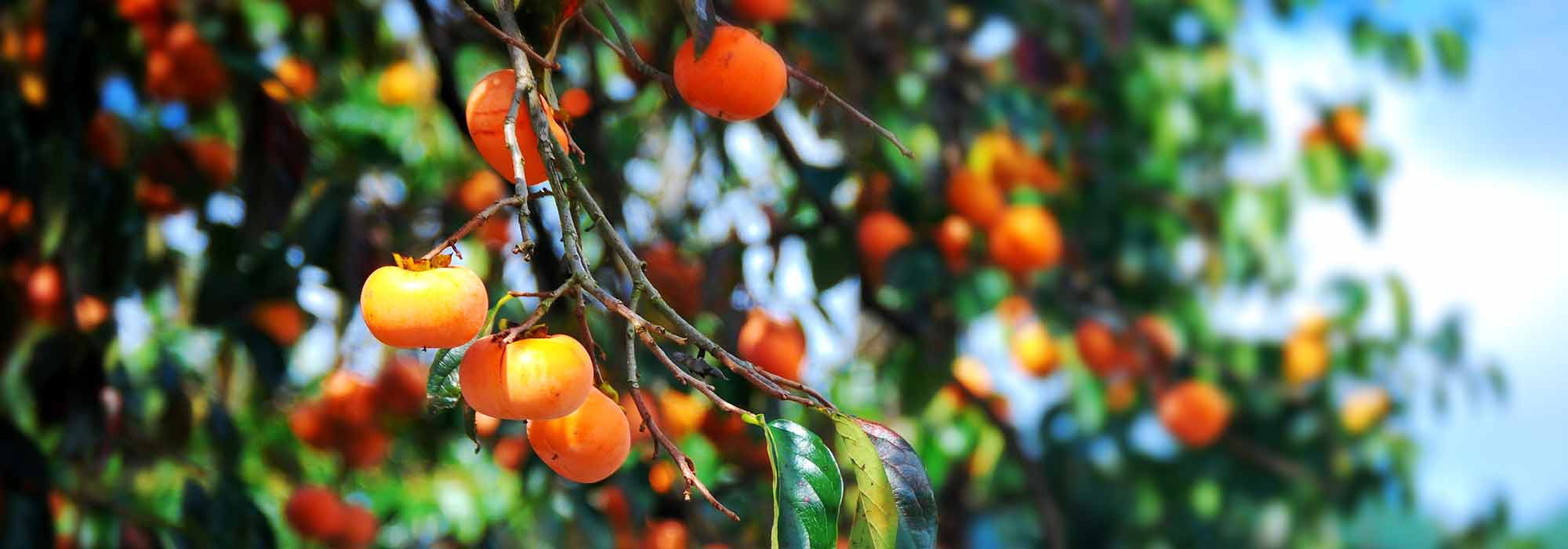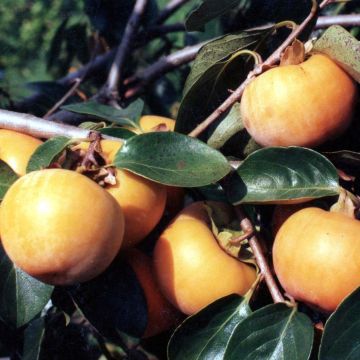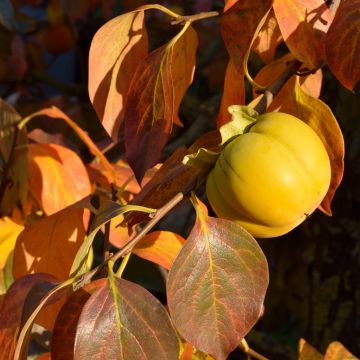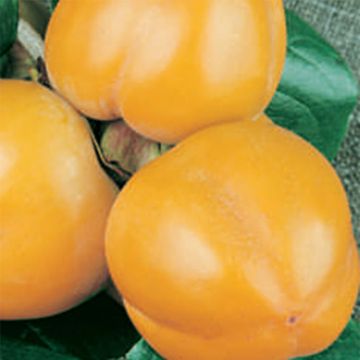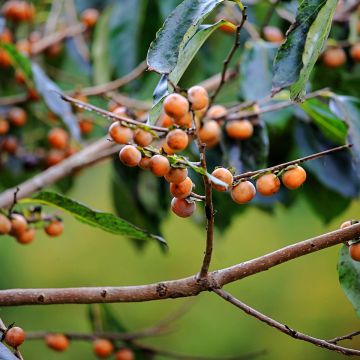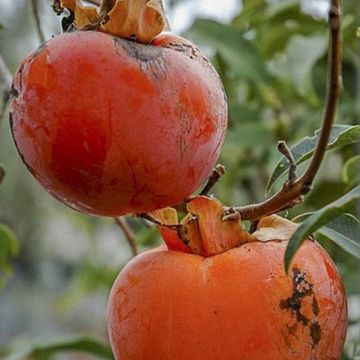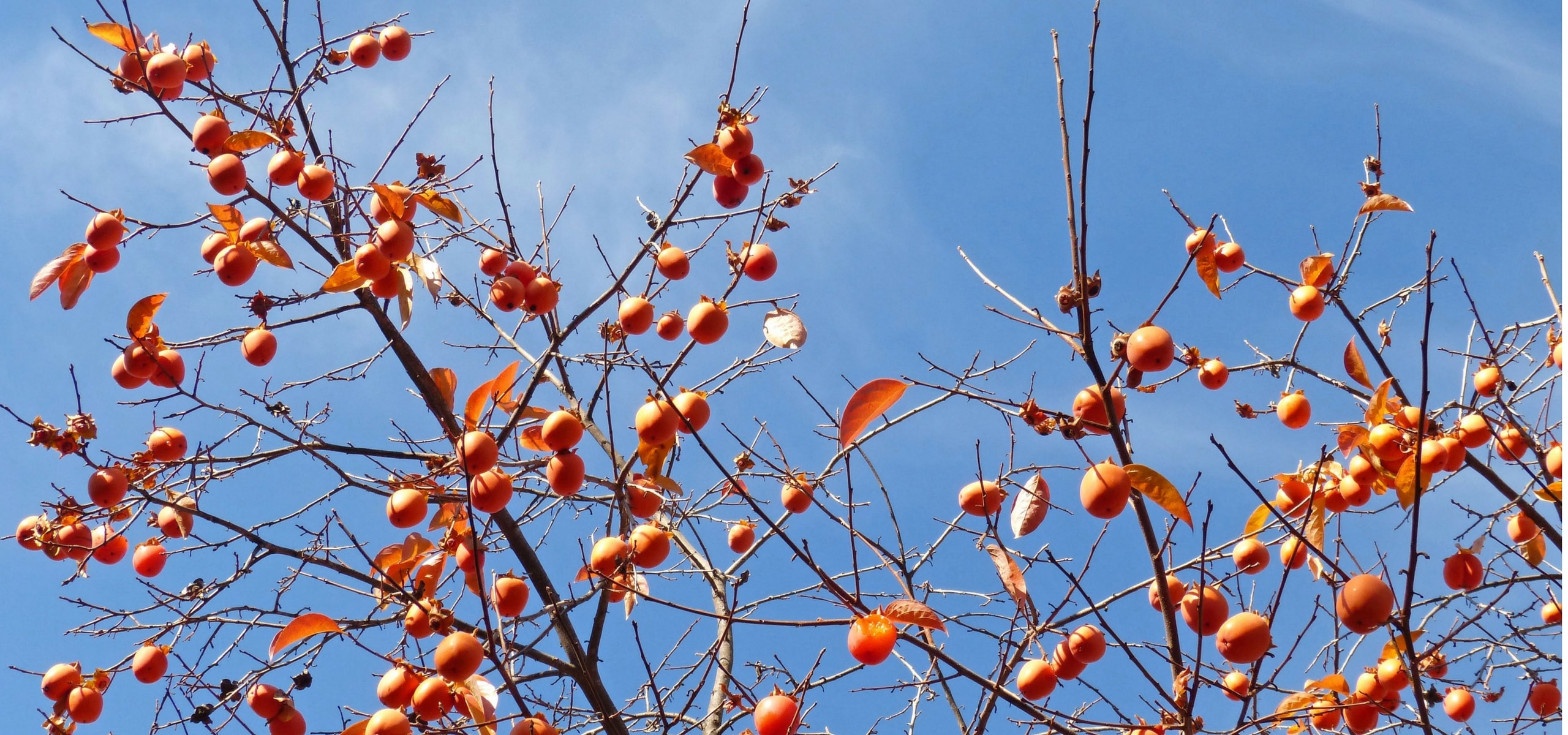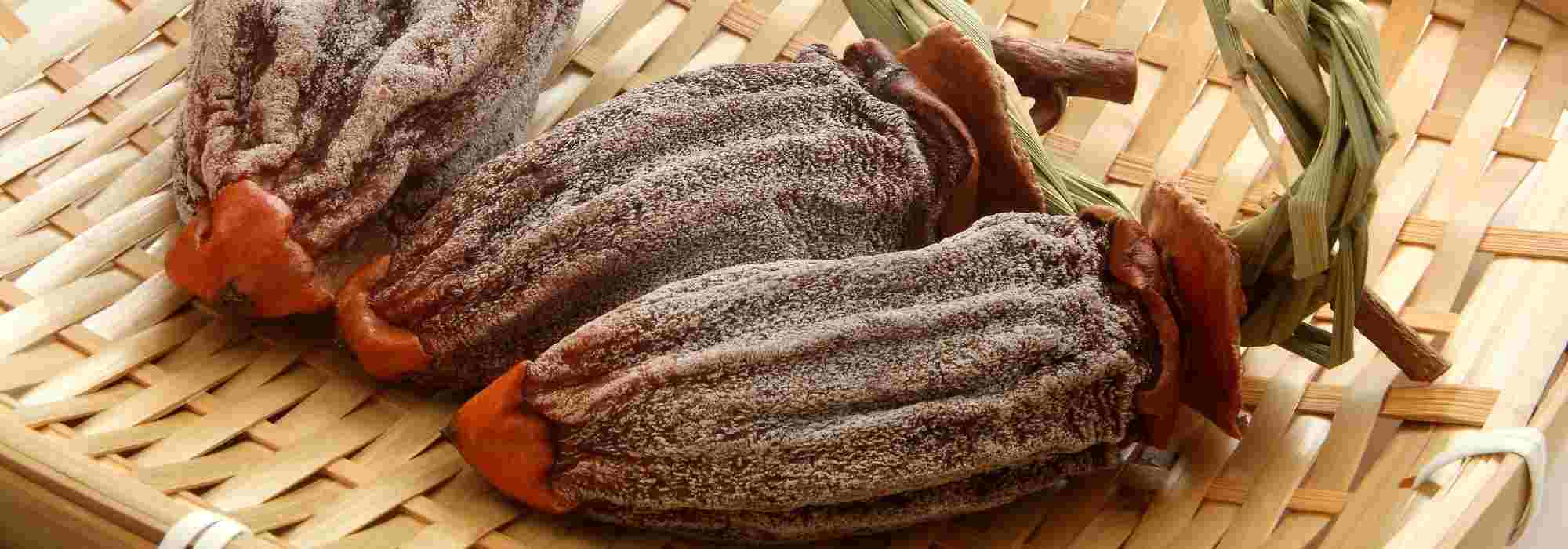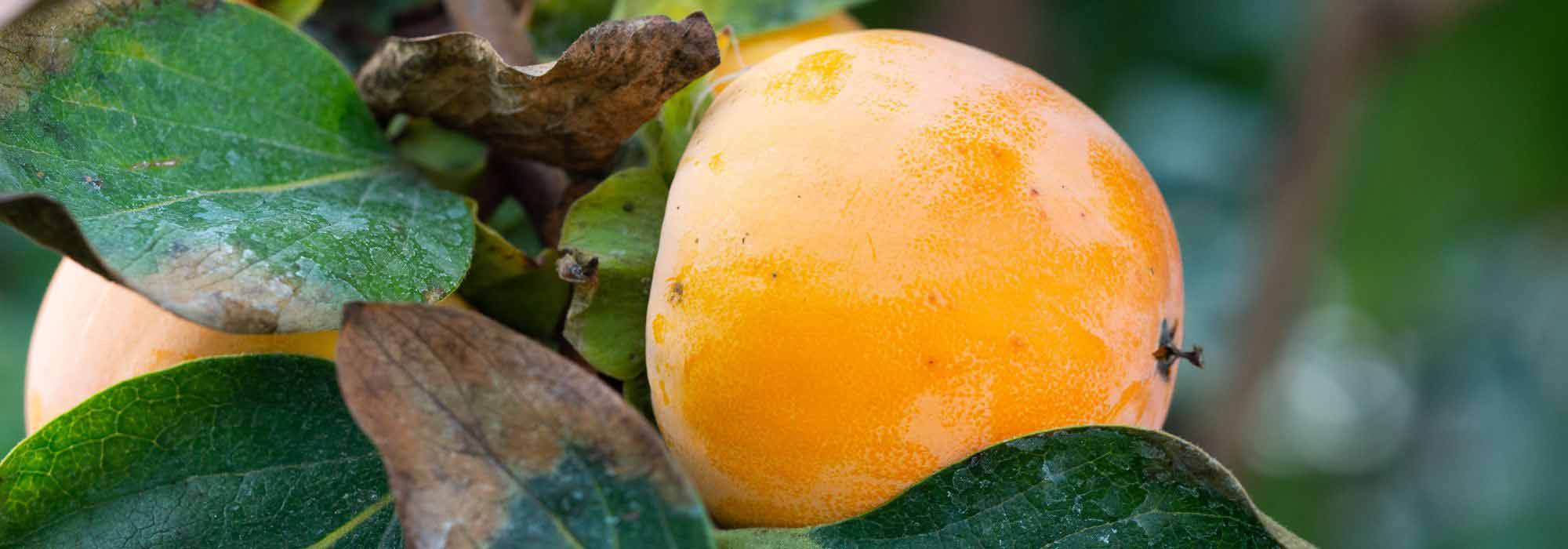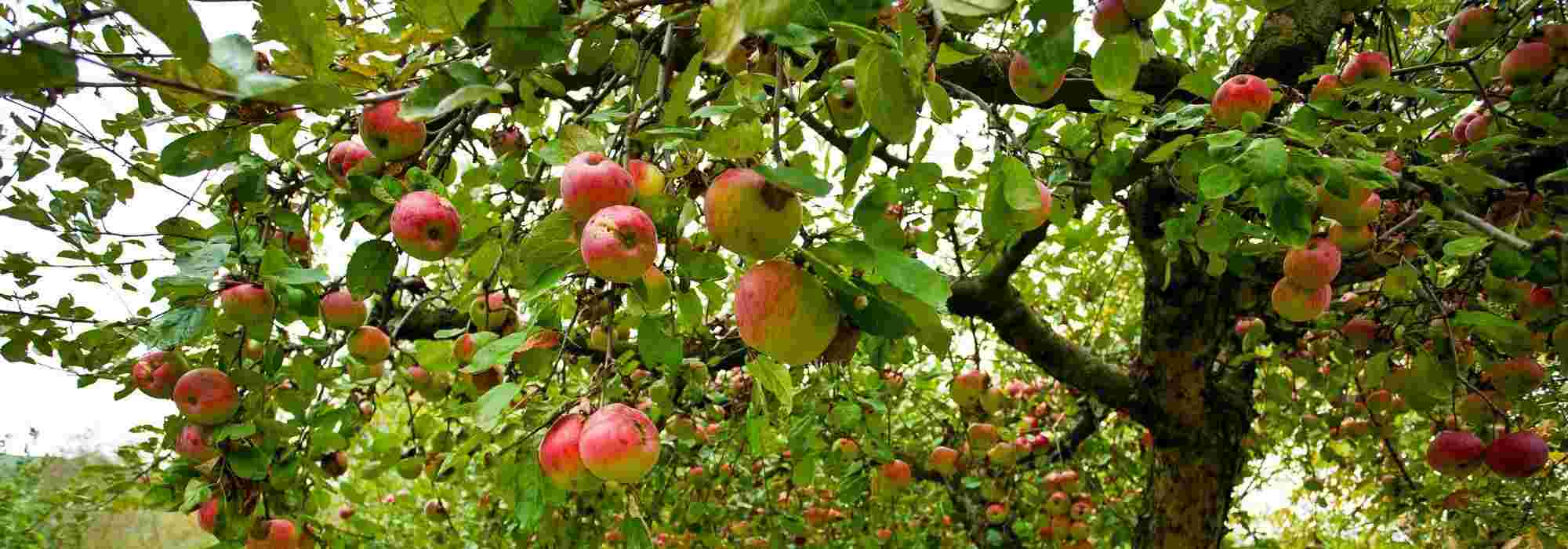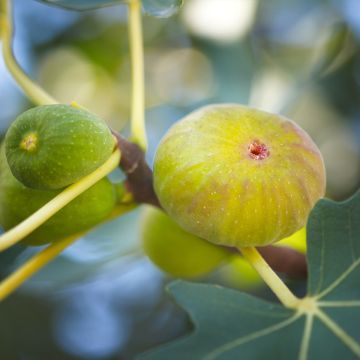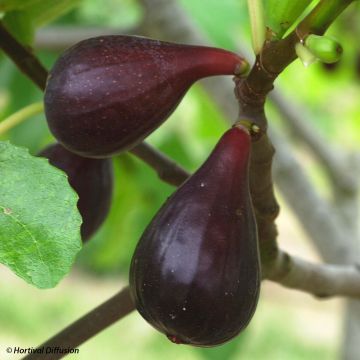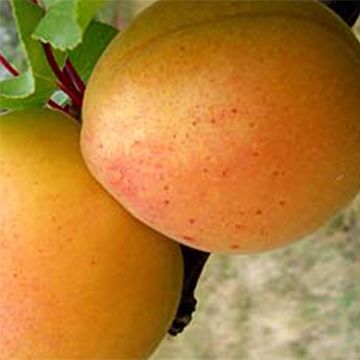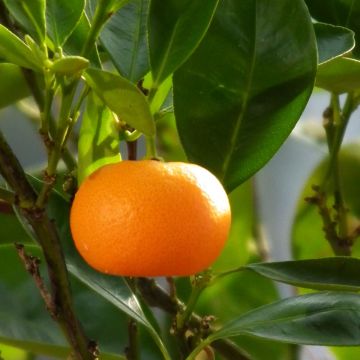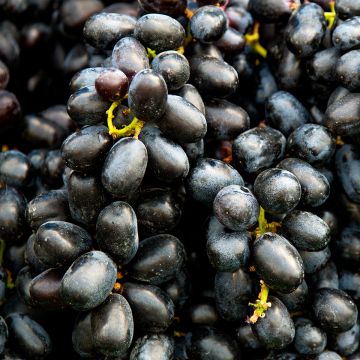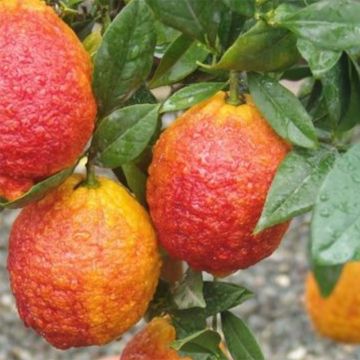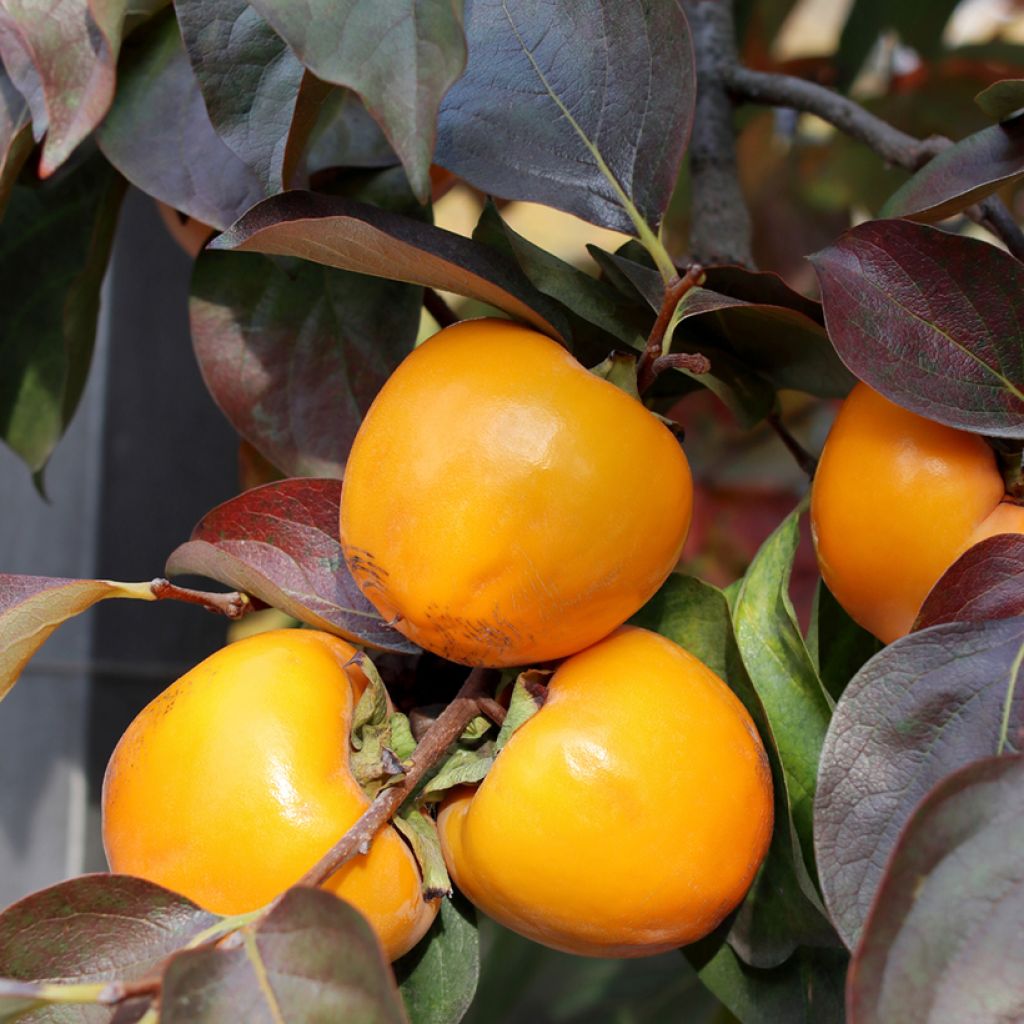

Diospyros kaki Ragno - Persimmon
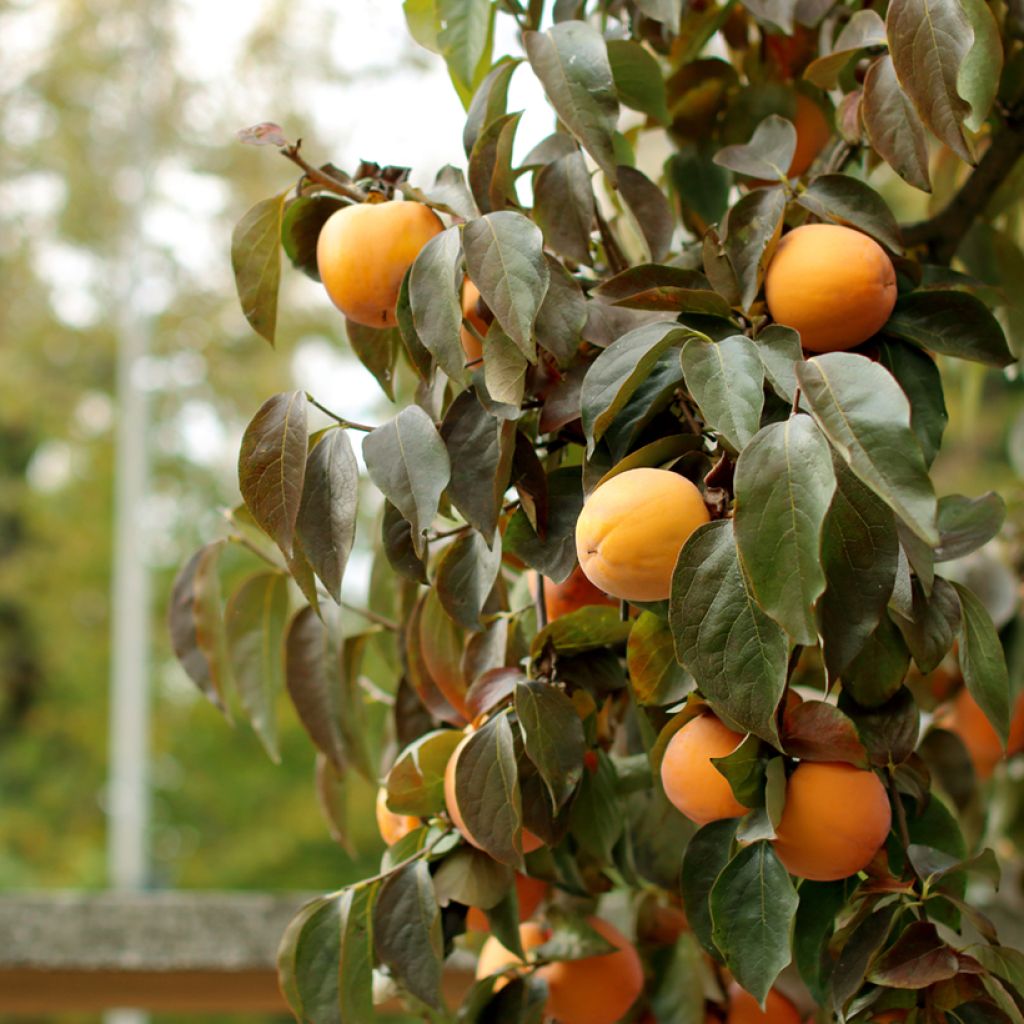

Diospyros kaki Ragno - Persimmon
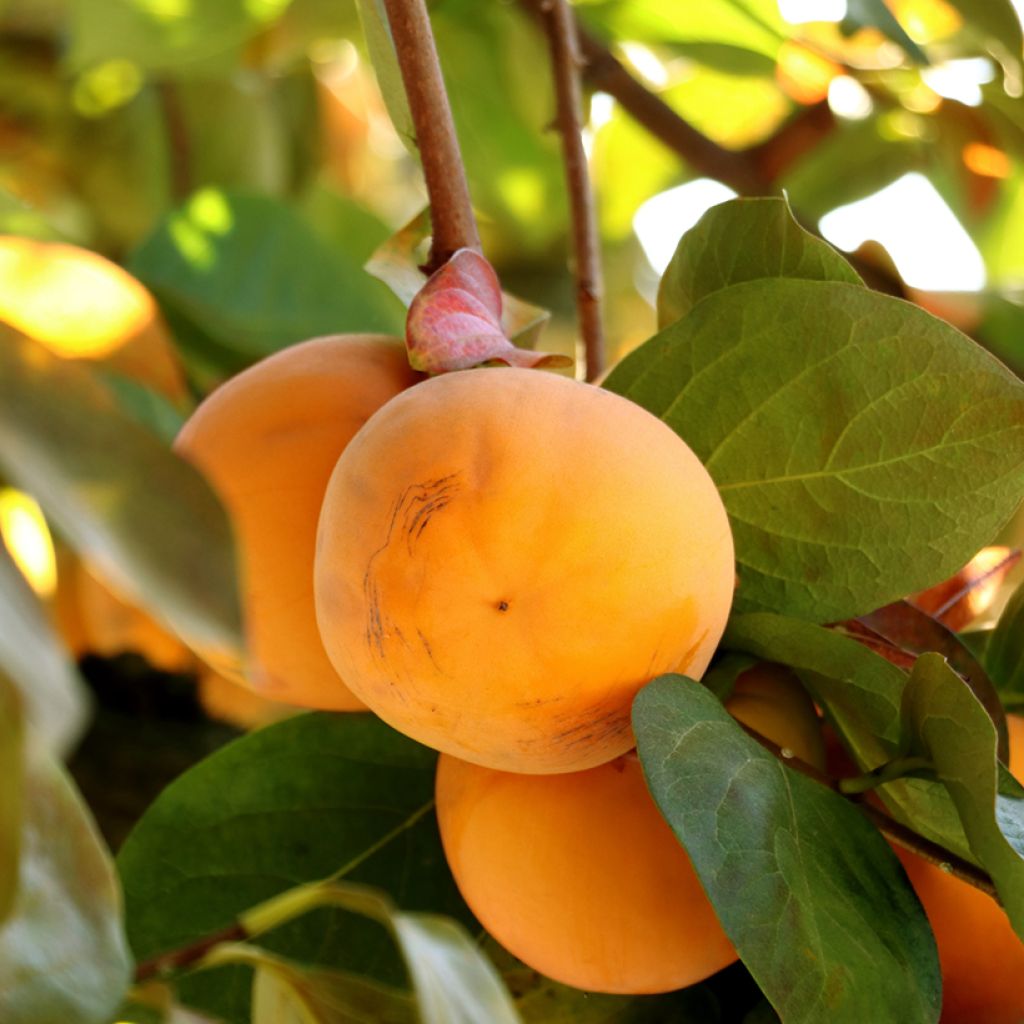

Diospyros kaki Ragno - Persimmon
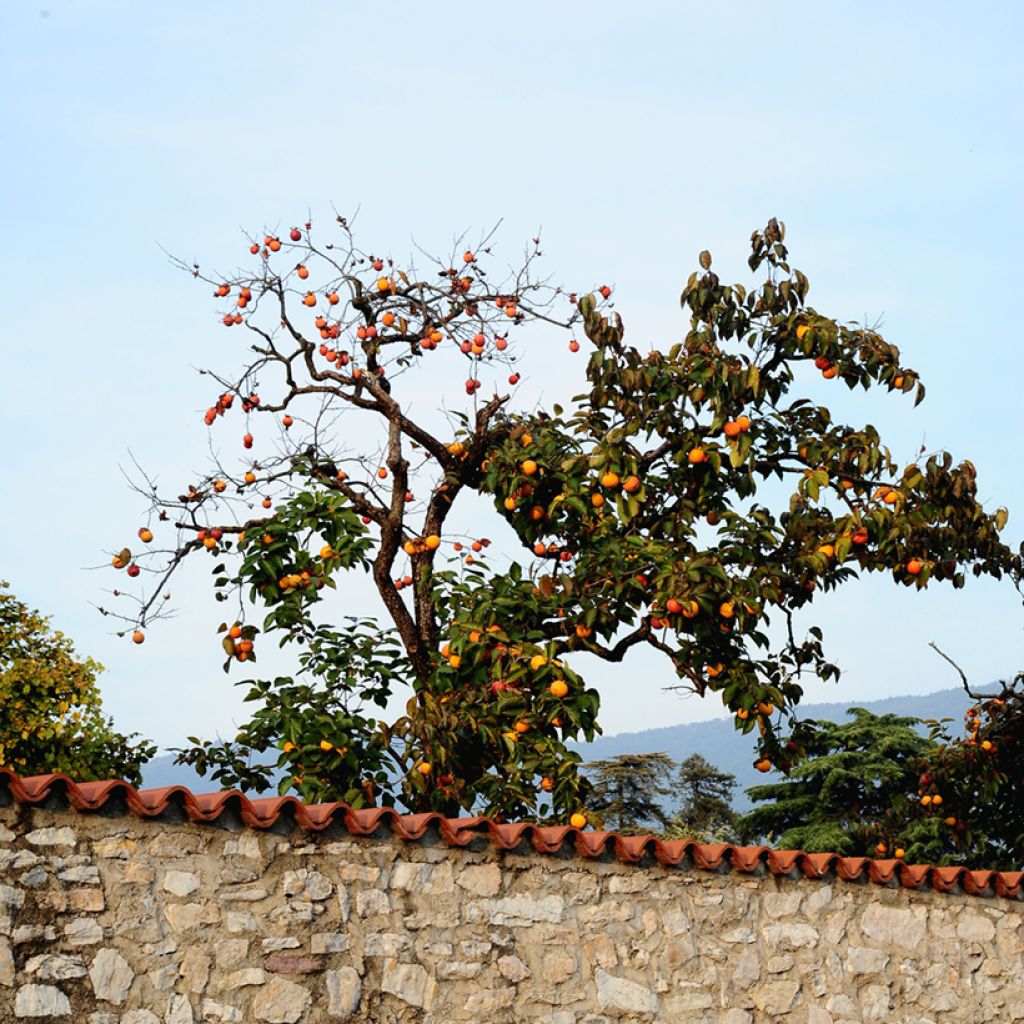

Diospyros kaki Ragno - Persimmon


Diospyros kaki Ragno - Persimmon
Diospyros kaki Ragno - Persimmon
Diospyros kaki Ragno
Persimmon, Kaki, Japanese Persimmon, Oriental Persimmon
Persimmon of good size received in good condition and within the expected timeframe. I was a bit concerned when I saw the small volume of roots. It is now in place in the garden, awaiting establishment in the spring.
Pascal, 22/11/2025
Special offer!
Receive a €20 voucher for any order over €90 (excluding delivery costs, credit notes, and plastic-free options)!
1- Add your favorite plants to your cart.
2- Once you have reached €90, confirm your order (you can even choose the delivery date!).
3- As soon as your order is shipped, you will receive an email containing your voucher code, valid for 3 months (90 days).
Your voucher is unique and can only be used once, for any order with a minimum value of €20, excluding delivery costs.
Can be combined with other current offers, non-divisible and non-refundable.
Home or relay delivery (depending on size and destination)
Schedule delivery date,
and select date in basket
This plant carries a 6 months recovery warranty
More information
We guarantee the quality of our plants for a full growing cycle, and will replace at our expense any plant that fails to recover under normal climatic and planting conditions.
Description
Diospyros kaki 'Ragno' is distinguished by its small size that does not exceed 3m (10ft) in height. It is an excellent variety of astringent persimmon that is best consumed fully ripe when the flesh is soft. At this stage, it reveals a pleasant aroma of apricot and pear. Its fruits, called persimmons, are of medium size, approximately 6 to 8cm (2 to 3in) in diameter, and can weigh 90 to 130 grams. They are roughly the size and shape of a tomato, and are slightly elongated and somewhat conical. The thin skin transitions from green to orange as it ripens, and then turns red when over-ripe. At this stage of ripeness, the skin is less astringent and the fruit becomes enjoyable to eat. The orange-red pulp is tender, melting, juicy, sweet, slightly fibrous, and highly aromatic. It is not acidic. It may contain small reddish seeds. Persimmons are pleasant to eat raw in early winter, or can be transformed into jams, compotes, and jellies, etc. They can also be used in savoury recipes. It is not necessary to plant another persimmon nearby to obtain fruits. It is disease-resistant and requires minimal maintenance.
Diospyros kaki belongs to the Ebenaceae family, like ebony (D. ebenum), with which it shares a common feature: very hard wood. Its name comes from the combination of the Greek words "Dios" (God) and "Pyros" (wheat). It originates from the Far East, particularly from southern China, where it has been cultivated for over 2000 years. In Europe, D. kaki is said to have been introduced by the botanist Joseph Banks, who brought it back during Captain Cook's first voyage, around 1768. The persimmon proves to be the favourite fruit of many Asian countries, especially China, Korea, and Japan. It is grown in southern France, Israel, and Spain (Valencia region).
'Ragno' originates from a town in Italy with the same name. This persimmon tree forms a fairly vigorous and slow-growing tree with a rounded shape, and compact and spreading habit. It reaches approximately 2 to 3m (7 to 10ft) in height and 1.5 to 2m (5 to 7ft) in width at maturity. It has a long lifespan and can live up to 100 years. Its bark becomes highly decorative, ranging from pale grey to brown and peeling as it ages. Its habit is ideal for free-form shapes on tall or low stems. The deciduous foliage consists of large, ovate, acuminate leaves with prominent veins. They are slightly leathery, shiny, and pubescent on the underside. The dark green foliage develops autumnal shades ranging from yellow to red. Flowering occurs around May-June, protecting it from spring frosts. It is a monoecious tree that produces male and female flowers. The nectar-rich single flowers are cream to pale-yellow in colour, and approximately 1.5 to 2cm (1in) in diameter. They appear on the young shoots of the current year and are attached to the branch by a very short peduncle. The larger female flowers are solitary on stronger branches, while the smaller male flowers are grouped in clusters of 2 or 3 on thinner branches. Fruits can form without pollination, through parthenocarpy: the female flower is not fertilised, but the fruit develops nonetheless. It is then seedless. It is a hardy tree that can withstand temperatures around -20°C (-4°F). To ensure proper ripening of the fruits, it is wise to provide them with good sunlight. In cooler regions, plant them near a south-facing wall to protect them from the wind
The fruits are harvested as soon as they turn reddish, usually from mid-October onwards. The harvest extends until the first frosts, as they ripen. It takes around 4 to 5 years to fruit. Optimal fruit production is achieved after 7 to 9 years. An adult persimmon tree (between 10 and 20 years) produces an average of 30 to 60 kilograms of fruits per year. As persimmons are fragile, they should be carefully harvested with a picking pole or manually using a ladder. They are harvested when they are slightly soft to the touch and should be consumed quickly. Their flavour is significantly better and their astringency is reduced when they are harvested over-ripe, after experiencing a light frost. They can also be harvested while still firm and allowed to ripen indoors, wrapped in newspaper, with the stem facing downwards. Place them near apples to aid ripening. For longer storage, storing at low temperatures (-1 to +1°C (30.2 to 33.8°F) allows the fruits to be preserved for 2 to 4 months.
Persimmons have melting, smooth, and honey-like flesh that can be consumed naturally, cut in half and eaten with a spoon. They blend well in fruit salads. In cooking, they reveal all their flavours when transformed into jams, compotes, and jellies, or used to make crumbles and cakes. They can also accompany savoury dishes. The leaves can be used to make persimmon leaf tea, a commonly served infusion in China, Korea, and Japan. This tea is known for its benefits to the body. Low in acidity and low in calories, persimmons are particularly rich in carbohydrates, fibre, and carotenoids. They are also rich in antioxidants, provitamin A, and minerals (copper and potassium, calcium, phosphorus).
With its advantages, the persimmon tree finds its place in the garden, planted on a lawn, in an orchard, or in an edible hedge. It is highly ornamental, and its spreading habit will provide shade in summer. It brings great pleasure to those who own it. You can easily find the variety that suits you among a wide range of persimmons.
Diospyros kaki Ragno - Persimmon in pictures
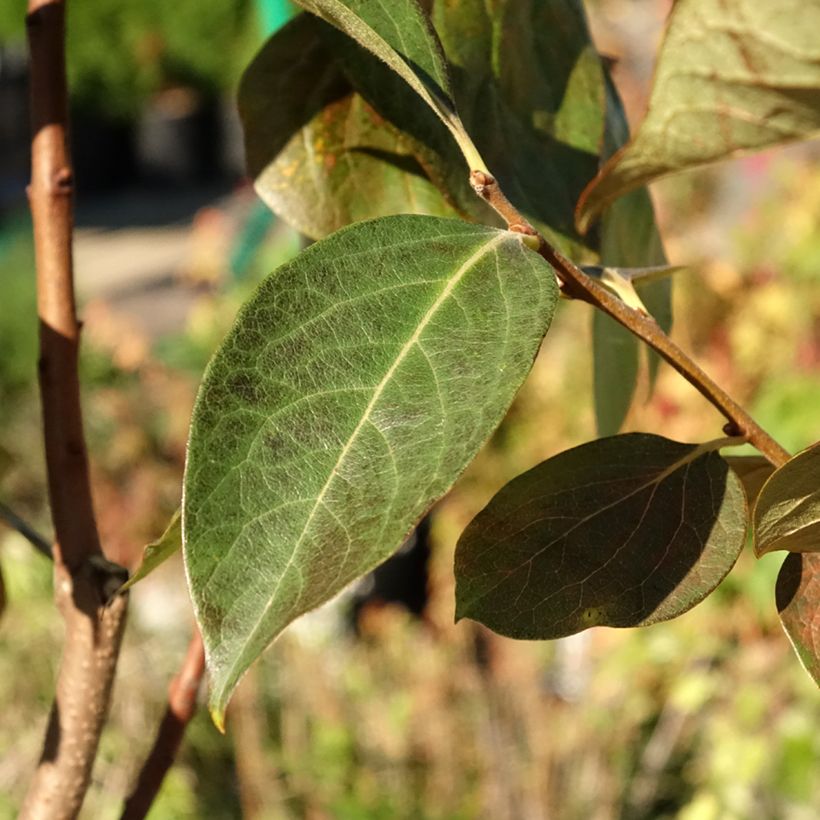

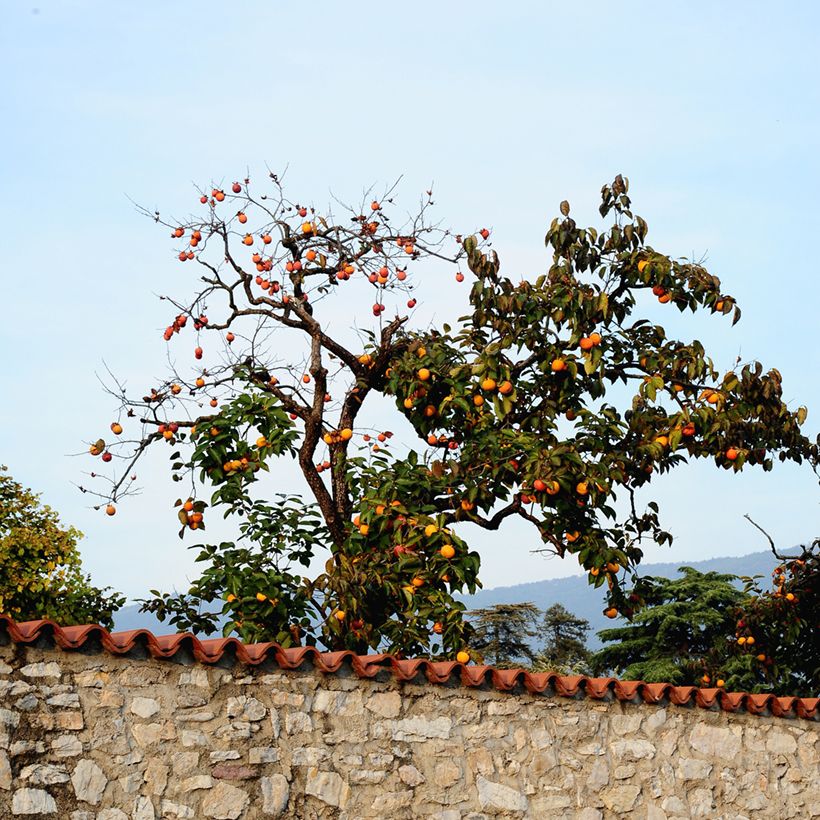

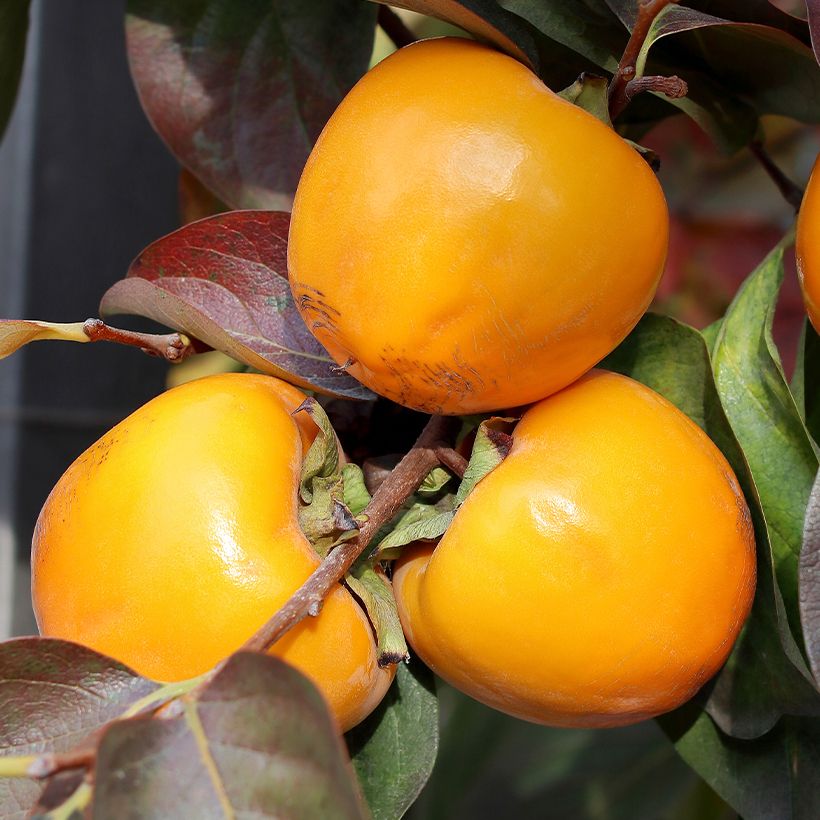

Plant habit
Fruit
Flowering
Foliage
Botanical data
Diospyros
kaki
Ragno
Ebenaceae
Persimmon, Kaki, Japanese Persimmon, Oriental Persimmon
Cultivar or hybrid
Other Persimmon trees - Diospyros
View all →Planting and care
Plant in autumn-winter, outside the freezing period, or alternatively in spring, with regular watering. Choose a sheltered and sunny location. It thrives in all types of soil, preferably with an acidic tendency (it fears excess limestone). It thrives in well-drained and rich soils, and tolerates water shortage fairly well in summer, especially in deep soil. Space them 5 to 7m (16 to 23ft) apart in all directions.
Soak the root ball in water for a few moments before planting. Dig a hole 3 to 4 times the volume of the root ball, making sure to separate the bottom soil from the top soil. Mix the bottom soil with crushed horn and well-rotted compost or potting soil, then pour this mixture into the planting hole. Install a stake. Place the root ball, without burying the collar, cover with the top soil and firm it down. Form a basin around the base and water generously. Attach the stake to the plant, crossing the tie in the shape of an 8, without touching the trunk. Water regularly in the first year and then as needed, mainly in case of high temperatures.
Apply well-rotted compost every year in spring by raking it into the surface, taking care not to damage the roots.
It is less susceptible to diseases and pests.
Planting period
Intended location
Care
Planting & care advice
-
, onOrder confirmed
Reply from on Promesse de fleurs
Similar products
Haven't found what you were looking for?
Hardiness is the lowest winter temperature a plant can endure without suffering serious damage or even dying. However, hardiness is affected by location (a sheltered area, such as a patio), protection (winter cover) and soil type (hardiness is improved by well-drained soil).

Photo Sharing Terms & Conditions
In order to encourage gardeners to interact and share their experiences, Promesse de fleurs offers various media enabling content to be uploaded onto its Site - in particular via the ‘Photo sharing’ module.
The User agrees to refrain from:
- Posting any content that is illegal, prejudicial, insulting, racist, inciteful to hatred, revisionist, contrary to public decency, that infringes on privacy or on the privacy rights of third parties, in particular the publicity rights of persons and goods, intellectual property rights, or the right to privacy.
- Submitting content on behalf of a third party;
- Impersonate the identity of a third party and/or publish any personal information about a third party;
In general, the User undertakes to refrain from any unethical behaviour.
All Content (in particular text, comments, files, images, photos, videos, creative works, etc.), which may be subject to property or intellectual property rights, image or other private rights, shall remain the property of the User, subject to the limited rights granted by the terms of the licence granted by Promesse de fleurs as stated below. Users are at liberty to publish or not to publish such Content on the Site, notably via the ‘Photo Sharing’ facility, and accept that this Content shall be made public and freely accessible, notably on the Internet.
Users further acknowledge, undertake to have ,and guarantee that they hold all necessary rights and permissions to publish such material on the Site, in particular with regard to the legislation in force pertaining to any privacy, property, intellectual property, image, or contractual rights, or rights of any other nature. By publishing such Content on the Site, Users acknowledge accepting full liability as publishers of the Content within the meaning of the law, and grant Promesse de fleurs, free of charge, an inclusive, worldwide licence for the said Content for the entire duration of its publication, including all reproduction, representation, up/downloading, displaying, performing, transmission, and storage rights.
Users also grant permission for their name to be linked to the Content and accept that this link may not always be made available.
By engaging in posting material, Users consent to their Content becoming automatically accessible on the Internet, in particular on other sites and/or blogs and/or web pages of the Promesse de fleurs site, including in particular social pages and the Promesse de fleurs catalogue.
Users may secure the removal of entrusted content free of charge by issuing a simple request via our contact form.
The flowering period indicated on our website applies to countries and regions located in USDA zone 8 (France, the United Kingdom, Ireland, the Netherlands, etc.)
It will vary according to where you live:
- In zones 9 to 10 (Italy, Spain, Greece, etc.), flowering will occur about 2 to 4 weeks earlier.
- In zones 6 to 7 (Germany, Poland, Slovenia, and lower mountainous regions), flowering will be delayed by 2 to 3 weeks.
- In zone 5 (Central Europe, Scandinavia), blooming will be delayed by 3 to 5 weeks.
In temperate climates, pruning of spring-flowering shrubs (forsythia, spireas, etc.) should be done just after flowering.
Pruning of summer-flowering shrubs (Indian Lilac, Perovskia, etc.) can be done in winter or spring.
In cold regions as well as with frost-sensitive plants, avoid pruning too early when severe frosts may still occur.
The planting period indicated on our website applies to countries and regions located in USDA zone 8 (France, United Kingdom, Ireland, Netherlands).
It will vary according to where you live:
- In Mediterranean zones (Marseille, Madrid, Milan, etc.), autumn and winter are the best planting periods.
- In continental zones (Strasbourg, Munich, Vienna, etc.), delay planting by 2 to 3 weeks in spring and bring it forward by 2 to 4 weeks in autumn.
- In mountainous regions (the Alps, Pyrenees, Carpathians, etc.), it is best to plant in late spring (May-June) or late summer (August-September).
The harvesting period indicated on our website applies to countries and regions in USDA zone 8 (France, England, Ireland, the Netherlands).
In colder areas (Scandinavia, Poland, Austria...) fruit and vegetable harvests are likely to be delayed by 3-4 weeks.
In warmer areas (Italy, Spain, Greece, etc.), harvesting will probably take place earlier, depending on weather conditions.
The sowing periods indicated on our website apply to countries and regions within USDA Zone 8 (France, UK, Ireland, Netherlands).
In colder areas (Scandinavia, Poland, Austria...), delay any outdoor sowing by 3-4 weeks, or sow under glass.
In warmer climes (Italy, Spain, Greece, etc.), bring outdoor sowing forward by a few weeks.






























